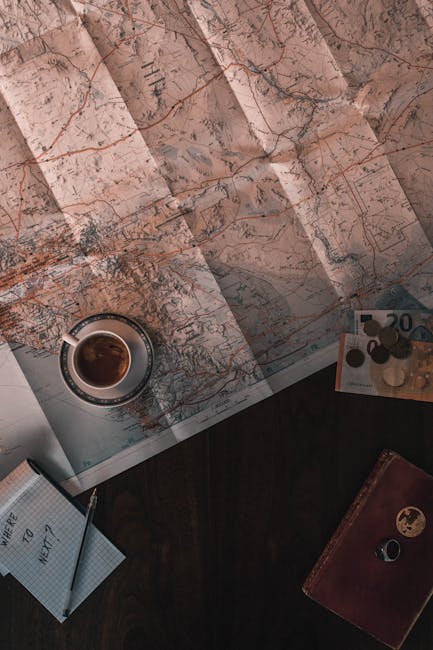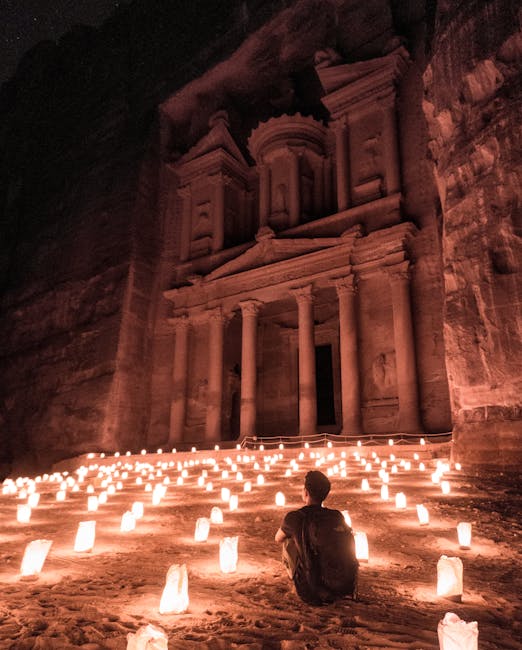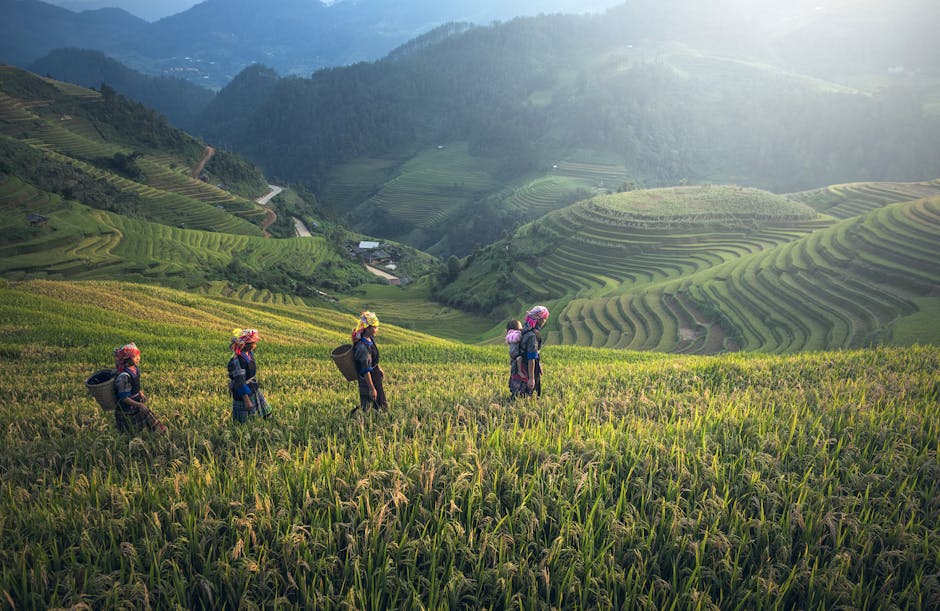Kakadu National Park: Ancient Landscapes, Wildlife & Art

Kakadu National Park: Ancient Landscapes, Wildlife & Art
Hey there, fellow travel enthusiasts! Ever dreamt of stepping back in time, surrounded by landscapes that whisper stories of millennia past, where ancient art adorns rock faces, and wildlife roams free? Well, let me tell you about my unforgettable journey to Kakadu National Park in Australia – a place that truly blew my mind. I'm so excited to share my experiences and insights with you, hopefully inspiring you to add this incredible destination to your bucket list!
A Journey to the Heart of Australia

Kakadu isn't just another national park; it's a UNESCO World Heritage Site bursting with natural beauty and profound cultural significance. It's located in the Northern Territory of Australia and spans nearly 20,000 square kilometers – that's about half the size of Switzerland! From towering escarpments and lush rainforests to vast floodplains teeming with life, Kakadu is a sensory feast that stays with you long after you've left.
My trip to Kakadu was a real adventure. I spent days exploring its diverse landscapes, marveling at its wildlife, and connecting with the rich Aboriginal culture. Honestly, I felt like I'd stepped into a living, breathing museum, where every rock, every tree, and every painting had a story to tell.
Ancient Landscapes Shaped by Time

One of the most striking things about Kakadu is its geology. The landscape is a testament to the power of time, shaped by millions of years of erosion and geological processes. The iconic sandstone escarpments, like those at Ubirr and Nourlangie Rock (Anbangbang), are remnants of an ancient plateau, carved by wind and water into the stunning formations we see today.
These escarpments aren't just visually impressive; they also provide vital habitats for many plant and animal species. Walking through the shaded gorges and exploring the rock shelters, you can almost feel the weight of history. Imagine the countless generations of Aboriginal people who have sought shelter here, leaving their mark on the rock walls in the form of stunning artwork.
The floodplains are another defining feature of Kakadu. During the wet season (roughly November to April), these vast plains transform into a network of waterways, attracting an incredible array of waterbirds and other wildlife. While the wet season can make some areas inaccessible, it's also a truly magical time to visit, with the landscape bursting with life and the waterfalls thundering down the escarpments.
During the dry season (May to October), the floodplains recede, revealing vast open grasslands and billabongs (waterholes). This is the best time for hiking and exploring the park's many walking trails. The cooler temperatures and drier conditions make it much easier to navigate the terrain and spot wildlife.
A Wildlife Paradise: Encounters with Nature

Kakadu is a haven for wildlife lovers. The park is home to an astonishing variety of animals, from iconic Australian species like kangaroos and wallabies to a dazzling array of birds, reptiles, and amphibians. And, of course, there are the crocodiles… you can't visit Kakadu without thinking about crocodiles!
Here are just a few of the incredible creatures I encountered during my trip:
- Saltwater Crocodiles: These apex predators are a common sight in Kakadu's rivers and billabongs. I took a Yellow Water Billabong cruise, and it was an unforgettable experience. Seeing these massive creatures basking in the sun or silently gliding through the water was both awe-inspiring and a little nerve-wracking! Remember to always be croc-wise and stay away from the water's edge.
- Jabiru: These majestic birds are a symbol of Kakadu. With their long legs and distinctive black and white plumage, they are a sight to behold. I saw them wading in the shallows, searching for food.
- Magpie Geese: These noisy birds are another common sight in Kakadu. They often congregate in large flocks, creating a cacophony of honking sounds.
- Wallabies and Kangaroos: While not as numerous as in some other parts of Australia, wallabies and kangaroos can still be spotted in Kakadu, especially in the early morning or late afternoon.
- Birds of Prey: Kakadu is a paradise for birdwatchers, with a wide variety of raptors soaring overhead. I spotted eagles, hawks, and kites circling in the sky, searching for prey.
One of my most memorable experiences was waking up early to watch the sunrise over the Yellow Water Billabong. The mist rising from the water, the sounds of birds awakening, and the vibrant colors of the sky created a truly magical atmosphere. It was a moment that I will cherish forever.
Rock Art: A Window into the Past

For me, one of the most moving aspects of Kakadu was the opportunity to see the ancient rock art. These paintings, created by Aboriginal people over thousands of years, are a powerful testament to their connection to the land and their rich cultural heritage. They provide a fascinating glimpse into their beliefs, traditions, and daily lives.
The rock art sites at Ubirr and Nourlangie Rock are particularly impressive. These sites feature hundreds of paintings, depicting animals, humans, and mythological figures. The paintings are created using a variety of techniques, including painting, stenciling, and engraving.
Walking through these ancient galleries, I felt a deep sense of connection to the past. I tried to imagine the artists who created these paintings, the stories they were trying to tell, and the lives they lived. It was a humbling and awe-inspiring experience.
There are several different styles of rock art found in Kakadu, including:
- X-ray Art: This style shows the internal organs and skeletal structure of animals, providing a unique perspective on their anatomy.
- Dynamic Figures: These paintings depict humans and animals in motion, capturing the energy and dynamism of life.
- Simple Figures: These paintings feature basic shapes and figures, often representing ancestral beings or totemic animals.
It's important to remember that these rock art sites are sacred to the Aboriginal people. When visiting these sites, it's crucial to be respectful and to follow any guidelines provided by park rangers or Aboriginal guides. Avoid touching the paintings, as this can damage them. And always be mindful of the cultural significance of these places.
Connecting with Aboriginal Culture

Kakadu is not just a national park; it's also a living cultural landscape, home to the Bininj/Mungguy people, the Traditional Owners of the land. Their connection to Kakadu stretches back tens of thousands of years, and their knowledge of the land and its resources is invaluable.
During my visit, I had the opportunity to learn about Aboriginal culture through guided tours, cultural demonstrations, and interactions with local people. It was a truly enriching experience that gave me a deeper understanding of the park's history and significance.
One of the most impactful experiences was listening to Aboriginal guides share their stories and knowledge of the land. They spoke of the importance of respecting the environment, the interconnectedness of all living things, and the traditional ways of life that have sustained their people for generations.
Supporting Aboriginal-owned businesses and tourism initiatives is a great way to contribute to the local community and learn more about their culture. Consider taking a guided tour with an Aboriginal-owned company, visiting an Aboriginal art center, or purchasing locally made crafts. These experiences will not only enrich your trip but also help to support the preservation of Aboriginal culture.
Planning Your Kakadu Adventure

So, you're ready to plan your own Kakadu adventure? Here are a few tips to help you get started:
- Best Time to Visit: The best time to visit Kakadu is during the dry season (May to October). The weather is cooler and drier, making it easier to explore the park's many attractions. However, the wet season (November to April) can also be a magical time to visit, with the landscape bursting with life and the waterfalls thundering down the escarpments. Just be aware that some areas may be inaccessible due to flooding.
- Getting There: The closest major airport to Kakadu is in Darwin, the capital of the Northern Territory. From Darwin, you can drive to Kakadu (it's about a 3-hour drive) or take a tour.
- Accommodation: Kakadu offers a range of accommodation options, from campsites and budget-friendly motels to luxury resorts. Book your accommodation in advance, especially during the peak season.
- What to Pack: Be sure to pack light, comfortable clothing, sturdy walking shoes, a hat, sunscreen, insect repellent, and a water bottle. It's also a good idea to bring a raincoat, especially if you're visiting during the wet season.
- Safety: Kakadu is a remote and wild place, so it's important to be aware of the potential dangers. Always be croc-wise and stay away from the water's edge. Be mindful of the heat and humidity, and drink plenty of water. And be sure to let someone know your plans before heading out on a hike.
Must-See Attractions in Kakadu

With so much to see and do in Kakadu, it can be hard to know where to start. Here are a few of my personal favorite attractions:
- Ubirr: Famous for its stunning rock art and panoramic views of the surrounding floodplains. Don't miss the sunset from the top of the rock – it's truly breathtaking!
- Nourlangie Rock (Anbangbang): Another excellent rock art site with beautiful views. The Anbangbang Gallery is particularly impressive.
- Yellow Water Billabong: A must-do for wildlife lovers. Take a cruise on the billabong to see crocodiles, birds, and other wildlife up close.
- Jim Jim Falls and Twin Falls: These stunning waterfalls are a highlight of Kakadu. However, they are only accessible during the dry season and require a 4WD vehicle.
- Maguk (Barramundi Gorge): A beautiful swimming hole surrounded by lush rainforest. A great place to cool off after a hike.
- Gunlom Falls: A scenic waterfall with a series of natural plunge pools at the top. A popular spot for swimming and relaxing.
- Warradjan Cultural Centre: Learn about the culture and history of the Bininj/Mungguy people at this informative cultural center.
Respecting the Land and Culture

Before you go, let's talk about responsible tourism. Kakadu is a special place, and it's important to visit in a way that respects the environment and the local culture.
Here are a few things you can do to be a responsible tourist:
- Stay on marked trails: This helps to protect the fragile ecosystem and avoid disturbing wildlife.
- Don't litter: Pack out everything you pack in.
- Respect the rock art: Avoid touching the paintings and follow any guidelines provided by park rangers or Aboriginal guides.
- Support local businesses: Choose Aboriginal-owned businesses and tourism initiatives whenever possible.
- Learn about Aboriginal culture: Take the time to learn about the history and traditions of the Bininj/Mungguy people.
- Be mindful of your impact: Reduce your carbon footprint by using public transportation, conserving water, and avoiding single-use plastics.
By following these simple guidelines, you can help to ensure that Kakadu remains a beautiful and culturally significant place for generations to come.
My Final Thoughts on Kakadu

My trip to Kakadu was a truly transformative experience. It was a chance to connect with nature, learn about Aboriginal culture, and marvel at the power of time. I left Kakadu with a deep sense of respect for the land and its people, and a renewed appreciation for the beauty and fragility of our planet.
I highly recommend adding Kakadu National Park to your travel bucket list. It's a destination that will stay with you long after you've left, inspiring you to appreciate the wonders of the natural world and the importance of cultural preservation.
So, what are you waiting for? Start planning your Kakadu adventure today!
I hope this article has been helpful and inspiring. If you have any questions or comments, please feel free to leave them below. Happy travels!
Post a Comment